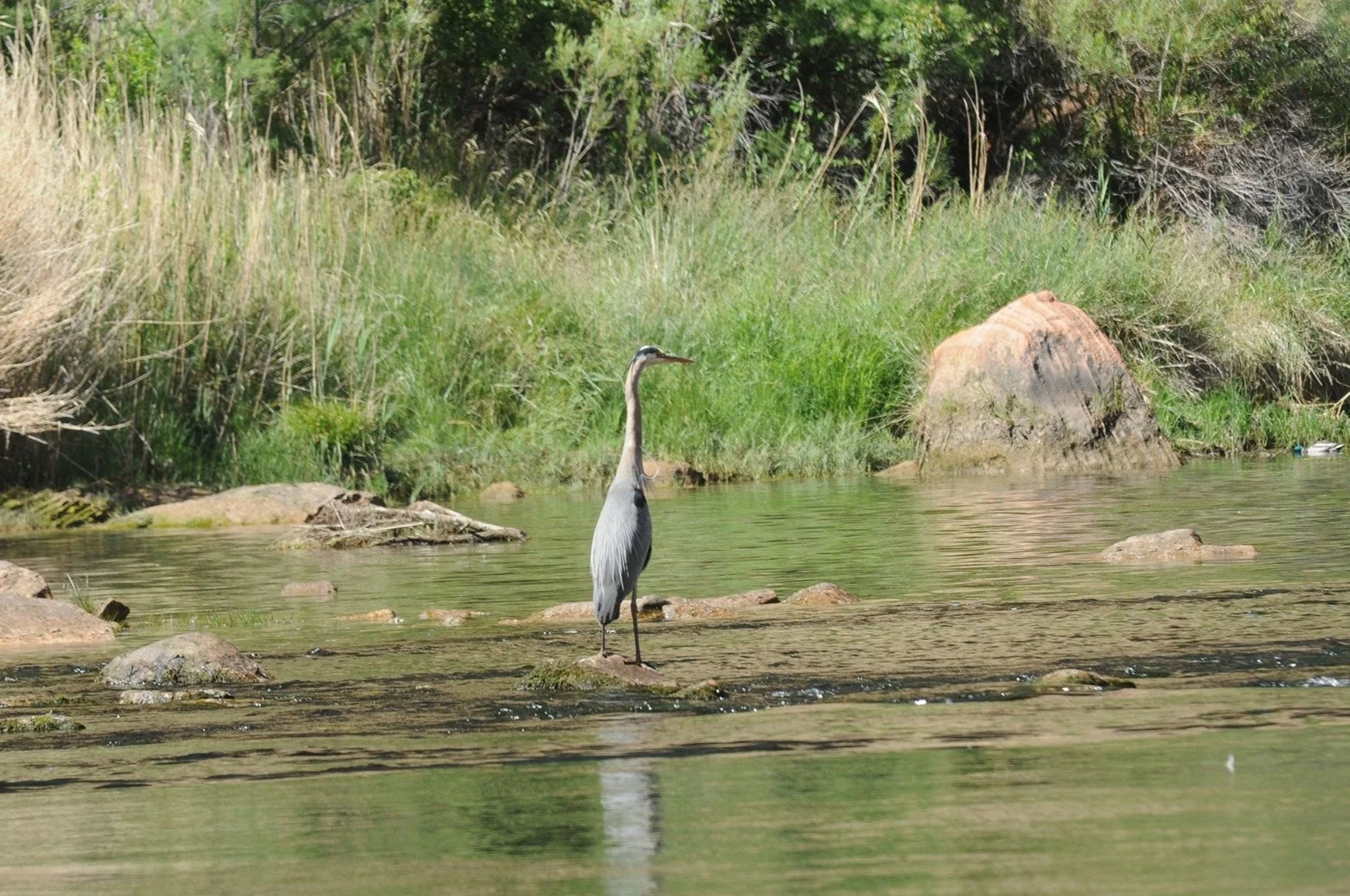
Weather, climate and wildlife
Much of Coconino County and Page reside on the Colorado Plateau. The Colorado Plateau is primarily an arid high desert environment in the Page region. The recreational trails in and around Page vary in elevation from a high point around 6,000 feet (1829 meters) to low points around 3,500 feet (1067 meters).
It is important when recreating in the area that visitors are mindful of the seasonality and possibility of drastically changing weather. It is your responsibility to ensure you and anyone you travel with are informed and prepared for the conditions you may face on the trail while away from services. Leave No Trace principle number 1 reminds us to ‘plan ahead and prepare’. When planning to spend time on trail, we should assess the current and forecast weather first. Learn more about the 7 principles of AppreciateAZ Leave No Trace.
Keep reading to learn more about some of the region’s specific risks and how to mitigate them. This is not a comprehensive list, but it highlights some of the hazards you could face.
Page Region Weather
The temperature and weather in Page can vary greatly throughout the course of the day. The temperature generally varies between 30°F to 97°F. In the summer months temperatures can average around 94°F and it is not uncommon for temperatures to exceed 100°F. Temperature swings can also be significant throughout the day. It is not unusual for the temperature to vary +/-30°F throughout the course of the day. You could start a hike early in the morning when it is 75°F and the temperature could rise to 100°F in a few hours before you return to the trailhead. Visitors should keep this in mind and look at the weather forecast to inform them how they dress and prepare to enjoy the outdoors.
Page Region Seasonal Average Temperatures
| Average temperatures | Winter | Spring | Summer | Fall |
|---|---|---|---|---|
| Average highs | 47°F or 8°C | 71°F or 22°C | 94°F or 34°C | 71°F or 22°C |
| Average lows | 31°F or -0.5°C | 48°F or 9°C | 69°F or 21°C | 50°F or 10°C |
Lightning and Monsoons
Lightning is common in the Page region especially in the summer. Most of the area has little to no protection from the elements. Visitors should look at the weather forecast before venturing out on trail. Reconsider your plans if lightning is forecasted. When outside, remember to periodically scan the horizon to look for incoming storm cells. It is ok to bail and return to shelter before reaching your objective if conditions are deteriorating.
If you do get caught in a lightning storm away from shelter, get as low as possible. Crouch with your feet together and keep your head low. This position will help decrease the chance of you being struck by lightning.
A monsoon is like a rainstorm, but they are typically caused by temperature imbalances that create low pressure systems. In Arizona, monsoons can create periods of intense rain and they can also generate strong storm cells with concentrated lightning.
In the summer, visitors should look at weekly weather forecasts to determine if/when daily monsoons are building in the area. If storms are regularly occurring in the area around 3:00PM, you may want to recreate outdoors earlier in the day to ensure you avoid them. Monsoons can also cause flash flooding. Even if the monsoon is not directly above you, intense precipitation elsewhere can flow your way creating flash flooding.
Elevation Considerations
Page, Arizona is not considered to be a particularly high elevation environment, but visitors should remember that traveling to areas higher than they typically live can affect them. If you are spending time at or near sea level immediately before visiting Page, consider limiting physical excursion for a short period of time right when you arrive.
Rivers and Creeks
There are a plethora of waterways around Page. On most days many dry river and creek beds exist amongst the canyons and depressions. Visitors should remain mindful of incoming weather while spending time near dry creek beds as flash flooding can quickly occur. Visitors should ‘Climb to stay alive’ if they find themselves in or near a dry creek bed when flooding or signs of flooding are noticed.
Wildlife
The southwestern United States and Northern Arizona has a diverse population of flora and fauna. The area around Page is home to many species of reptiles, amphibians, fish, birds, and larger mammals.
Mountain Lions, Bobcats, Bighorn Sheep, and Coyotes live in the area, but for the most part they keep their distance from humans. Some of the reptiles in the area are known to be venomous. Visitors should remember the animals they come across are wild. Make sure to keep your distance from wildlife. When in doubt, provide more space for wildlife!
Bobcat
Coyote
Common Side-blotched Lizard
Desert Cottontail Rabbit
Blue Heron
Rock Squirrel











